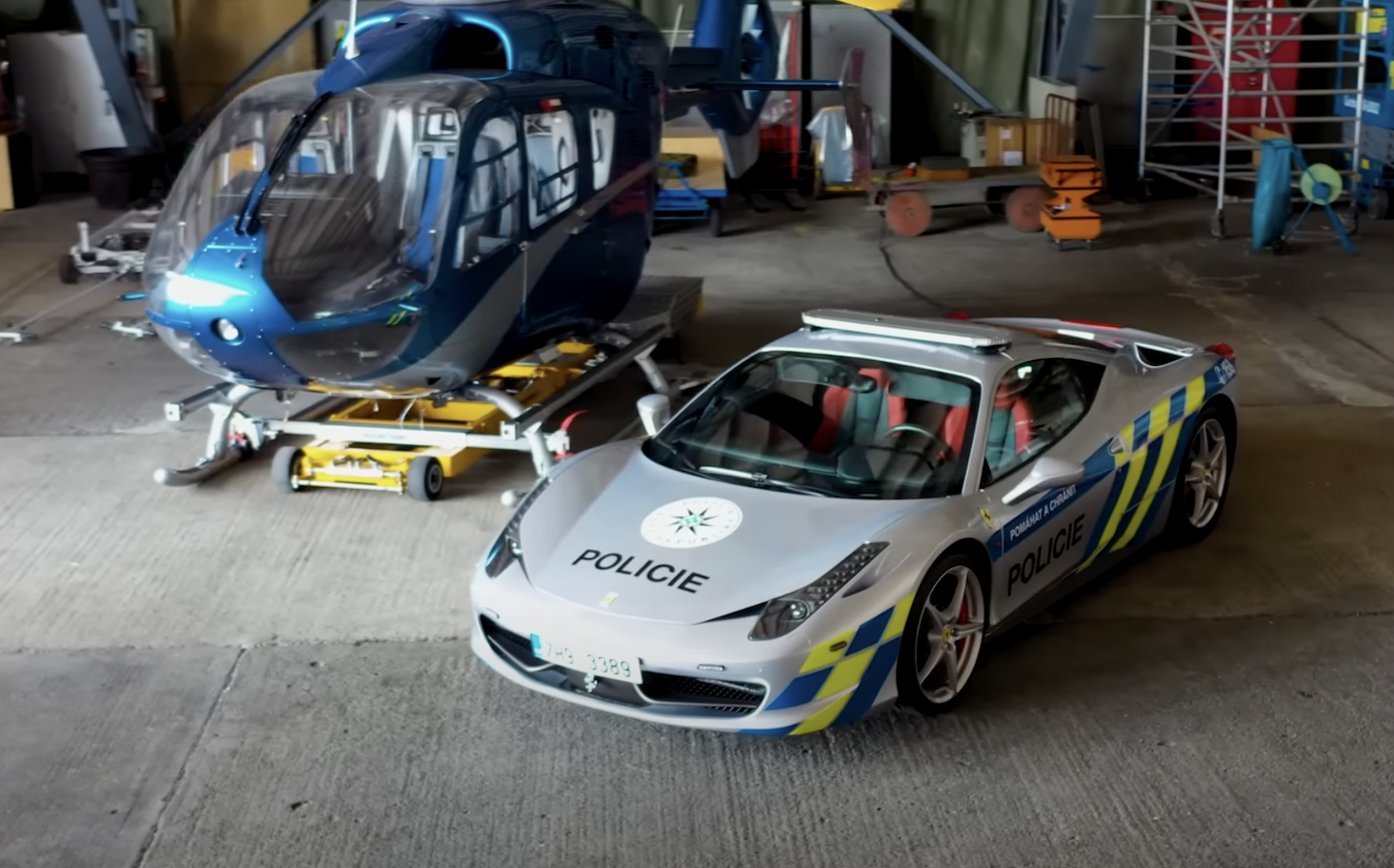Seized Ferrari 458 converted into police car in Czech Republic
What’s the Czech for “You’re nicked”?
Crime doesn’t pay … that is unless you’re the Czech police officer charged with driving this new addition to the fleet: a 202mph Ferrari 458 Italia supercar that had been seized from a criminal.
The Ferrari will be used “against the most aggressive drivers on Czech highways, when chasing stolen vehicles, or during surveillance at the locations of reported tuning events,” according to an official release about the crime-fighting conversion.
One target will illegal supercar races that pass through different countries, of which there were about 30 a year before the coronavirus pandemic. Such events feature vehicles similar to the Ferrari with “extreme performance that normal patrol vehicles cannot fully compete with,” the police said.
Due to the skill needed to safely utilise that 200mph performance, the new police car will serve under the Czech Republic’s Special Surveillance Department, being driven only by specially trained police officers.
Despite the 458’s ample power thanks to its 4.5-litre, 562bhp V8 engine, and the fact that used examples of similar 2011 models can fetch up to £150,000, Czech police insist that the costs involved in conversion were not excessive.
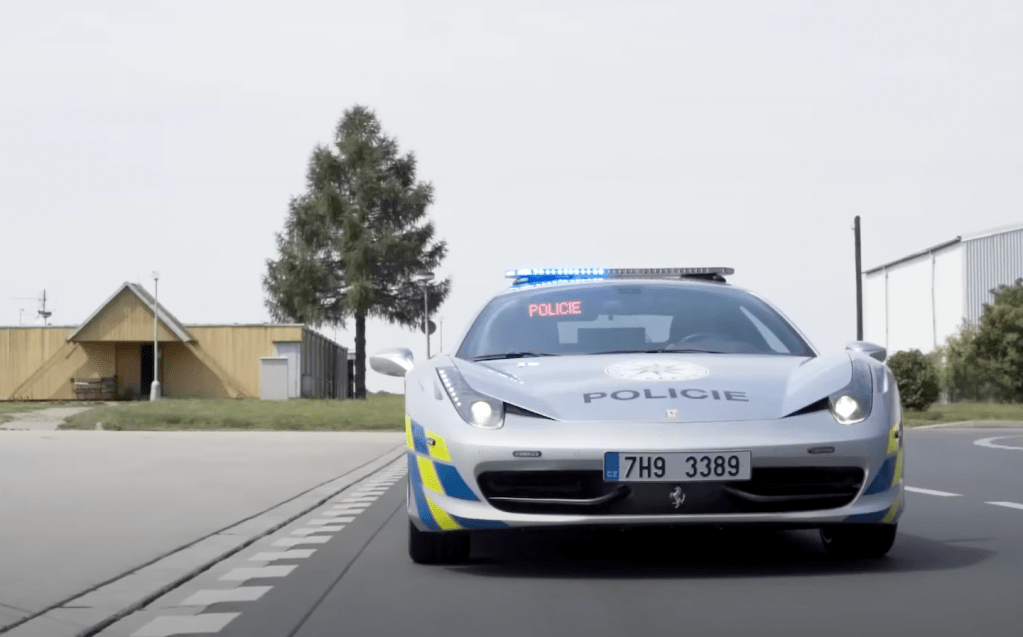
It cost around 340,000 koruna (approximately £11,700 at current exchange rates) to modify for police use, or around the same price as a new Skoda Scala in the Czech Republic.
A further 130,000 koruna (£4,500) was required to get the car back into running order after being in storage for 10 years following its forfeiture, one of the reasons that the Ferrari currently only has around 1,200 miles on the clock.
Formerly finished in Ferrari’s best-known colour, Rosso Corsa, the 458 was resprayed in police-issue silver with yellow and blue reflective markings. Other modifications included the addition of a police radio, camera system and a panel of lights on top.
Czech police seize around 900 vehicles yearly, and while the majority are sold, some, including the Ferrari, are retained for official use.
Czech police’s retention of the Ferrari is in stark contrast to the tactics used by other countries. The Philippines set an example in the fight against illegal imports and tax dodging by famously crushing several high-end cars with a digger in 2020, including Porsches, a McLaren, a Bentley Flying Spur and a Lotus.
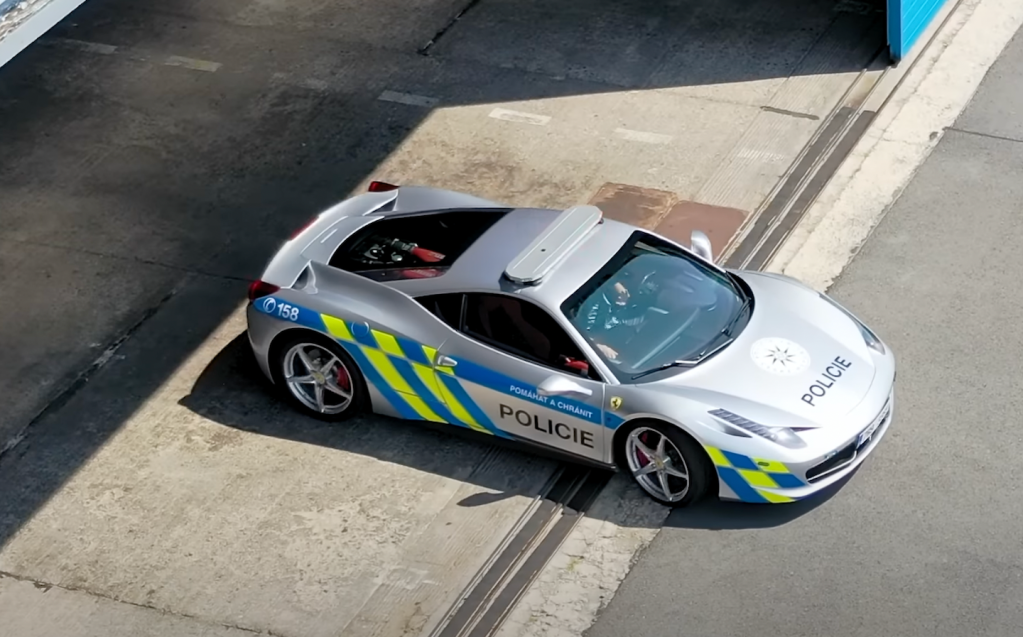
This Ferrari isn’t the first time that Czech police have employed something unusual and expensive — for a short while, BMW loaned one of its i8 plug-in hybrid models to the force, only for it to be crashed within a month after an officer suffered a medical incident.
Nor are Czech police alone in using supercars to pursue criminals. In the 1960s, police in Rome used a pair of V12-engined Ferrari 250 GTE models as pursuit cars. Although one barely lasted a year before being wrecked in the line of duty, the other and its driver, policeman Armando Spatafora, became legendary in the Italian capital, remaining on duty for six years and always being sent back to Maranello for servicing.
Italian police are still well-known for using Lamborghinis as high-speed pursuit cars, while various European countries, including Germany and the Netherlands, have used Porsches over the years.
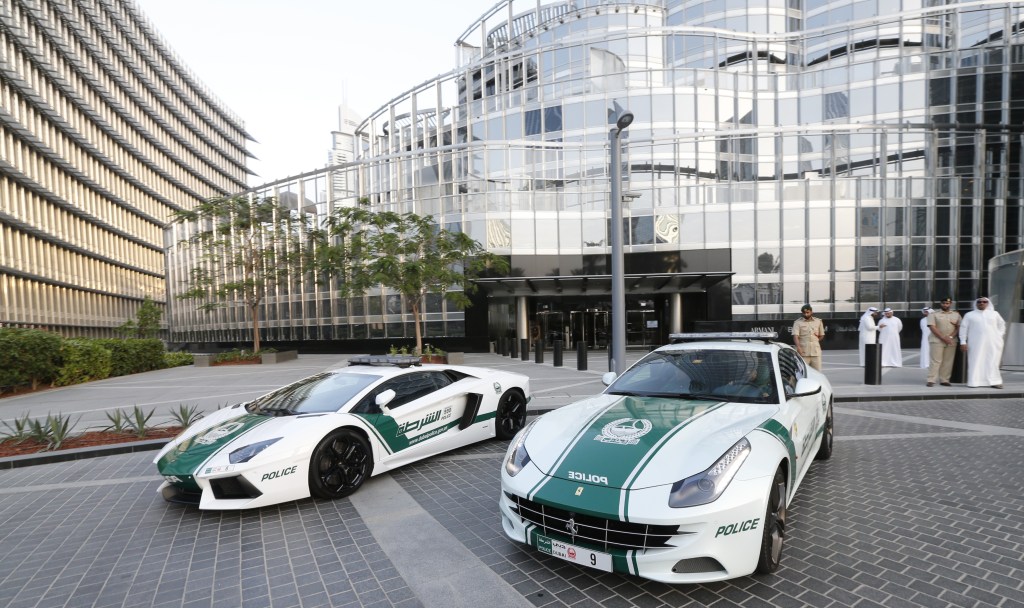
None can compare to the fleet of supercars used by Dubai police in the United Arab Emirates. At times its fleet has included an incredibly rare Aston Martin One-77, a Bentley Continental GT, Bugatti Veyron, a suite of McLarens, Lamborghinis, Ferraris, a Porsche 918 and even a Rolls-Royce Wraith, all of which are primarily used for patrolling tourist areas to project the image of the country’s wealth.
In recent decades, high-speed British police vehicles have generally tended to be powerful versions of low-key executive and estate cars such as the BMW 5 Series and Volvo 850. That’s not to say there haven’t been some more outlandish and interesting police cars used in the UK over the years.
Police in Essex briefly trialled a version of the Ford RS200 back in the 1980s, though despite its rally-bred performance, it proved impractical.
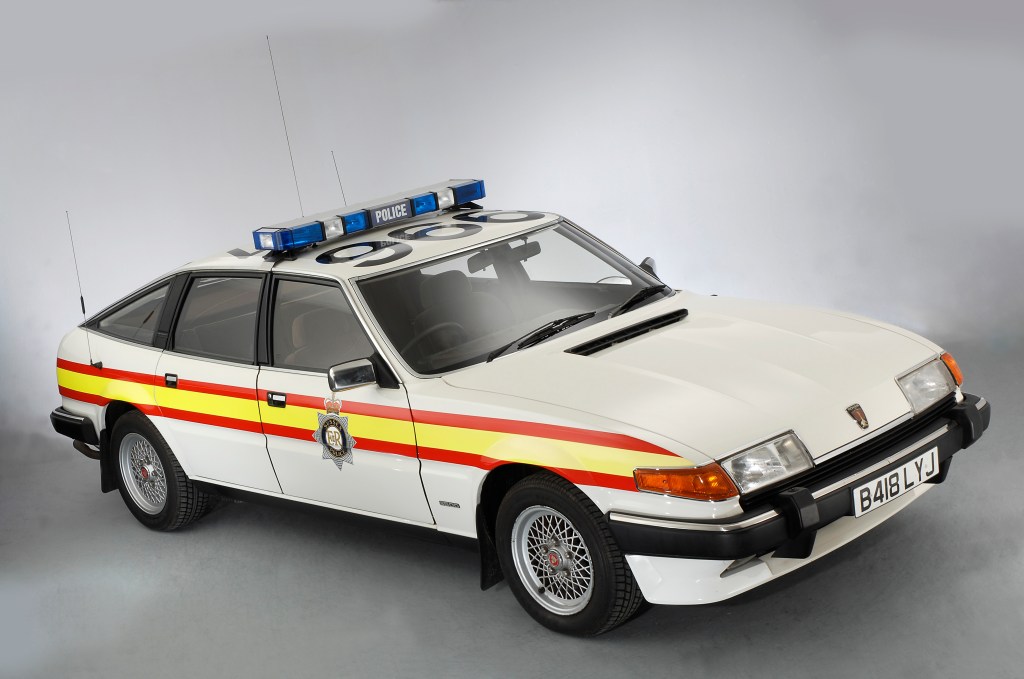
While police cars such as the V8-powered Rover SD1 (above) and Mini Cooper S are well-known, in the sixties and seventies, several police forces in the UK used various versions of the genteel MGB, including the roadster, GT and GT V8 model.
Jaguar police cars such as the 1960s S-Type weren’t hugely uncommon. However, some of the stranger Jaguar and Daimler models in use in Britain over the years included the weird-but-quick, V8-powered, fibreglass-bodied Daimler SP250 used by the Metropolitan Police in the early 1960s to catch speeding café racers.
The SP250 was used by the Met and several other forces up and down the country, while Warwickshire police in the 1980s briefly used an XJS police demonstrator on loan from Jaguar for patrolling the M6 motorway.
Related articles
- After reading about the Czech police repurposing a seized Ferrari, discover why electric police cars aren’t ready just yet
- Keen to go electric? Here are the top 10 longest-range electric cars
- And click here to see all the car makers’ electric vehicle plans
Latest articles
- Carmakers fined £461m in UK and Europe for not competing over vehicle recycling
- Volkswagen Tayron 2025 review: Useful seven-seat SUV and decent PHEV — just not at the same time
- Skoda Enyaq 2025 review: Same book, different cover for electric SUV
- Lewis Hamilton wants to design a modern day Ferrari F40 with manual gearbox
- Dacia Bigster 2025 review: The ‘anti-premium’ family SUV that punches above its weight
- Your car’s worn tyres could be being burnt illegally in India, investigation reveals
- Open-top 214mph Aston Martin Vanquish Volante is world’s fastest blow-dry
- F1 2025 calendar and race reports: The new Formula One season as it happens
- Alfa Romeo Junior Ibrida 2025 review: Hybrid power adds an extra string to crossover’s bow


